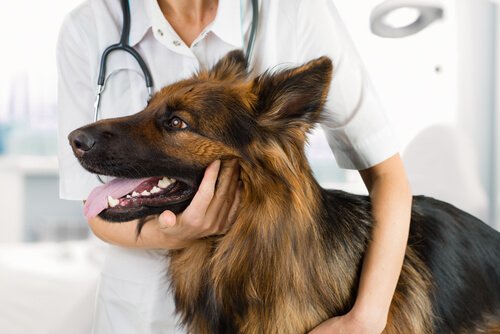What to Do If Your Dog Has a Skin Condition

Dogs can contract many diseases that can unintentionally go unnoticed by their owners, and some of these will affect their skin. With the large amount of fur that a lot of dogs have, spotting these types of anomalies is not always easy. They can also be even more difficult to treat. So, if your dog has a skin condition, be sure to keep reading to find out some helpful tips on how to treat him.
The different types of skin diseases in dogs
Some diseases can develop into quite serious skin conditions. Here are a few of them:
Scabies (Mange)
The cause of this condition is a parasite that invades the animal’s skin and reproduces on it. Because of this, the affected animal ends up having hundreds, and even thousands, of parasites crawling through its skin. This inevitably causes the animal to itch and scratch unbearably.
When scratching, the animal can hurt itself and serious skin conditions can develop. These conditions (provoked by the mange) will cause the animal a lot of pain and itching. If the disease goes untreated, it becomes an untenable vicious cycle that will cause your pet a lot of stress.

Fungi
If your dog has a skin condition, the cause might be a fungal infection. A skin fungus can cause inflammation and flaking. Just like mange, this is a contagious disease. So, if you have any other pets at home, you should keep them away from the affected dog.
Food allergies
Just like they do with people, food allergies can produce rashes or skin conditions in dogs. This will cause the affected dog to scratch non-stop, and hurt themselves even more. However, a good way to easily recognize if it’s a food allergy is to check for signs of a runny nose and watery eyes, in addition to scratching and rashes.
Dermatitis
There are lots of different types of allergies that cause dermatitis. In fact, it is one of the most common skin diseases in dogs. Dermatitis makes dogs itch a lot, so you can be sure that a dog suffering from this disease just won’t stop scratching himself.

Owners can easily accidentally hurt their dogs when clipping their nails. On occasions, they can even cause their dog’s nails to bleed. The grass the dog comes in contact with, the dust in his home, mites, and/or humidity can all cause rashes and skin conditions to appear as a result.
Pyoderma
Pyoderma is caused by bacteria and causes a type of pus “volcano” in the areas near the hair follicles. As a general rule, these bacteria look for moist and fatty areas, so the most common areas to find them are in the anus, vulva, nose, and lips.
What to do if your dog has a skin condition
If your dog has a skin condition, the first thing you should do is take him to the vet. The doctor will be able to run the appropriate tests to find out what type of condition your dog has, and what is causing it.

The doctor will then give your dog the best possible treatment for his condition. They will contain either antihistamines or other similar medications, depending on your dog’s condition. However, there are several things you can do at home to help him. For example:
- Keep your dog from harming himself. The itching that skin conditions provoke could cause your dog to scratch himself so much that he may unintentionally harm himself. To avoid this, you can put fabric over the area where he is scratching himself. You could use socks, t-shirts, etc. However, be sure and tie them securely, because, otherwise, your dog will be able to get them off very easily.
- Put cream on the affected area. Ask your dog’s veterinarian to prescribe him a cream to relieve the itching. Apply it as often as you can to help keep your dog from scratching.
- Use wet washcloths. If your dog has a skin condition, wet washcloths are another good way of providing some relief. Place washcloths soaked in cold water on your dog, and don’t press down too hard, to avoid causing him any more discomfort.
Walk your dog
- Take your dog out for a walk. Sometimes, your dog’s itch can seem worse to him when he’s not occupied. So, take your pet out for a walk and play with him. This will distract hi and help him to forget about the itching for a while.
As we said earlier on, if your dog has a skin condition, the first thing to do is take him to the vet. Don’t wait; let your dog’s vet diagnose what he has, and give him the best available treatment.
All cited sources were thoroughly reviewed by our team to ensure their quality, reliability, currency, and validity. The bibliography of this article was considered reliable and of academic or scientific accuracy.
- Reinoso, S. (2017) Identificación de dermatopatías fúngicas en perros. (Tesis de grado, Universidad Politécnica Salesiana).
- Brazia, P., Queralt, M., Fondati, A. & Pulgdemont, A. (2000). Alergia e intolerancia alimentaria en el perro y el gato. Consulta Difus. Vet., 8 (72), 95-98.
This text is provided for informational purposes only and does not replace consultation with a professional. If in doubt, consult your specialist.